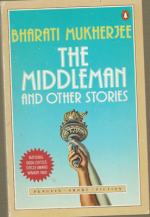|
This section contains 327 words (approx. 1 page at 400 words per page) |

|
The Management of Grief Summary & Study Guide Description
The Management of Grief Summary & Study Guide includes comprehensive information and analysis to help you understand the book. This study guide contains the following sections:
This detailed literature summary also contains Bibliography on The Management of Grief by Bharati Mukherjee.
"The Management of Grief" is a poignant fictional account of one woman's reaction to the 1985 bombing of Air India Flight 182. It was first published in 1988 in the collection The Middleman and Other Stories, winner of the 1988 National Book Critics Circle Award. "The Management of Grief" tells the story of Shaila Bhave, an Indian Canadian Hindu who has lost her husband and two sons in the crash. In third person narration, Shaila recounts the emotional events surrounding the event and explores their effects on herself, the Indian Canadian community, and mainstream Euro-Canadians. The clumsy intervention of a government social worker represents the missteps of the Canadian government in the general handling of the catastrophe.
Mukherjee herself had a deep personal response to the crash, having lived in Canada from 1966 to 1980 with her husband, Clark Blaise. She was enraged by the Canadian government's interpretation of the crash as a foreign, "Indian" matter when the overwhelmingly majority of the victims were Canadian citizens. In a book-length investigation and account of the incident, The Sorrow and the Terror, co-written with Blaise, Mukherjee pieces together the bombing and events leading up to it, charging the government with ignoring clear signs of Khalistani terrorism cultivated on Canadian soil. Mukherjee argues that the government dismissed the escalating Indian Canadian factionalism (e.g. Canadian Khalistanis vs. Canadian Hindus) as a "cultural" struggle that would be best settled among the "Indians." She blames Canada's official policy of "multiculturalism," which ostensibly encourages tolerance and equality but effectively fosters division and discrimination across racial boundaries.
The Sorrow and the Terror is a moving, non- fictional precursor to "The Management of Grief," articulating the human costs of the escalations of intra-ethnic Indian conflict whose reach does not exempt the country's North American emigrants. As Shaila laments: "We, who stayed out of politics and came half way around the world to avoid religious and political feuding, have been the first in the New World to die from it."
Read more from the Study Guide
|
This section contains 327 words (approx. 1 page at 400 words per page) |

|



